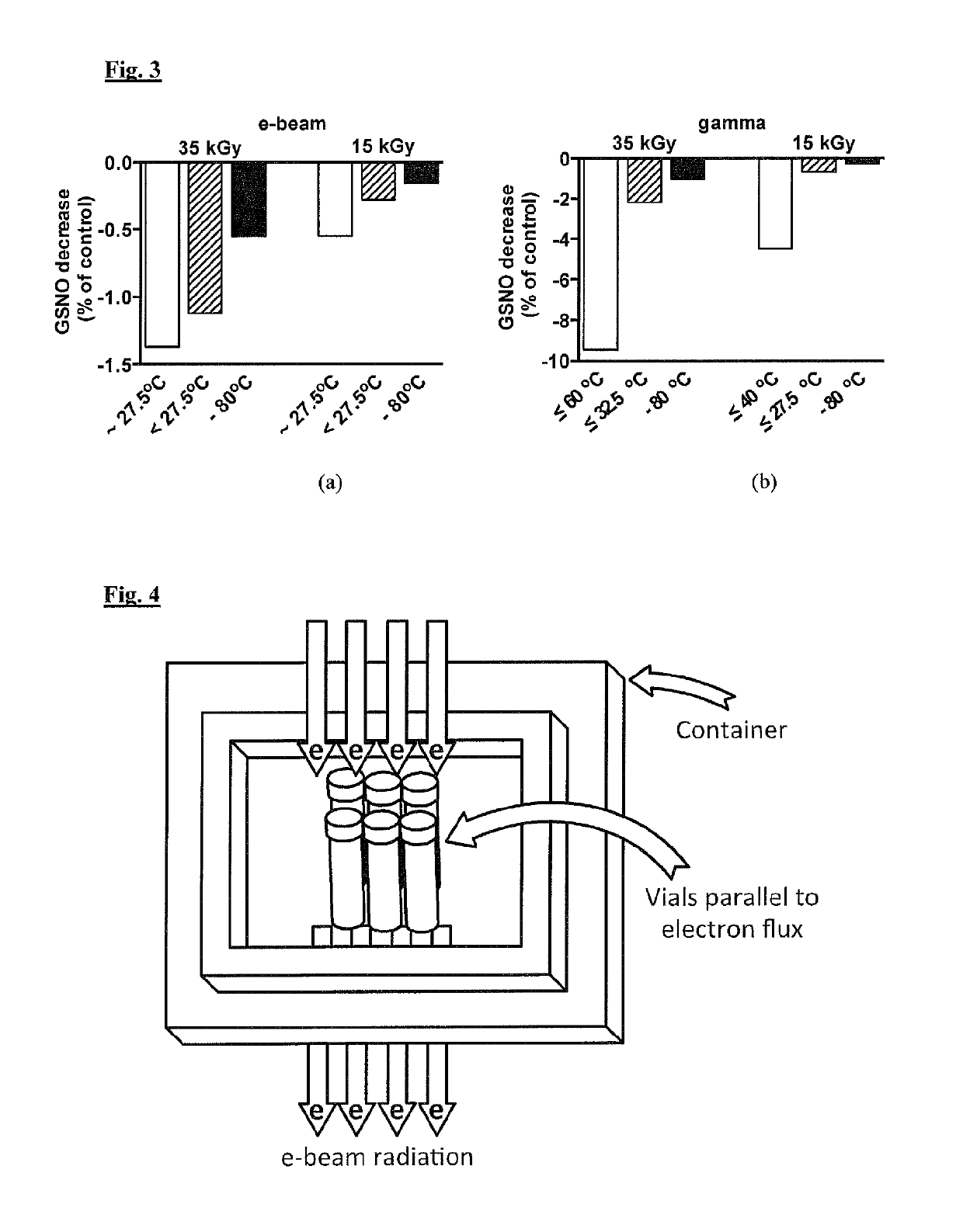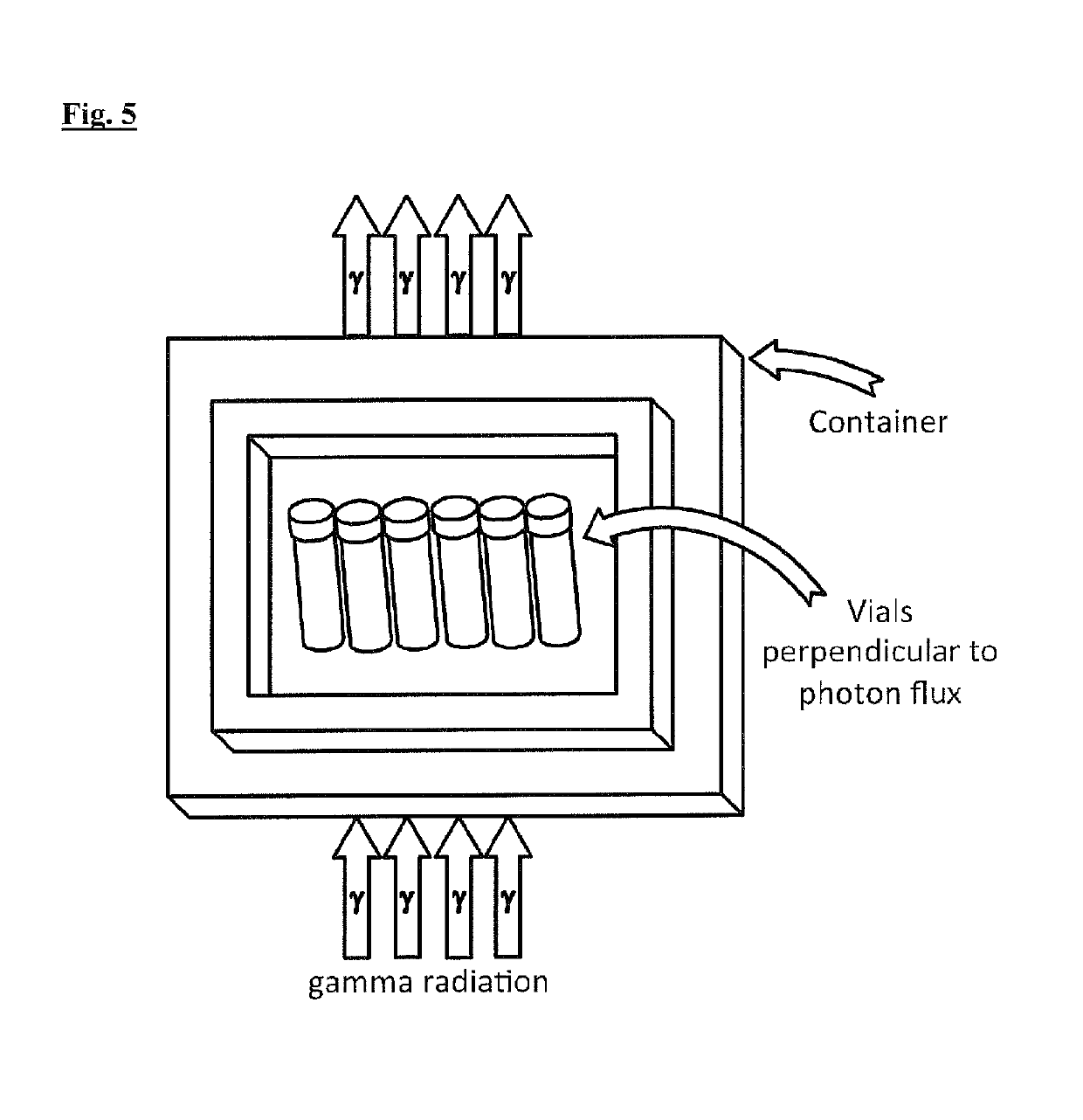Sterilisation of S-nitrosothiols
a technology of s-nitrosothiols and s-nitrosothiols, which is applied in the direction of disinfection, lavatory sanitory, drug compositions, etc., can solve the problems of inability to meet the requirements of s-nitrosothiols, so as to achiev
- Summary
- Abstract
- Description
- Claims
- Application Information
AI Technical Summary
Benefits of technology
Problems solved by technology
Method used
Image
Examples
example 1
Sterilisation of S-nitrosoglutathione Using E-beam and Gamma Radiation at Unconstrained Temperature Settings
[0123]S-nitrosoglutathione granule samples from a single manufacturing batch, contained in glass vials (up to 250 mg / vial), were stored before sterilisation surrounded by dry ice (solid CO2) at about −80° C. The matching controls were not irradiated but underwent similar conditions of storage and thermal management before, during and after irradiation, as compared with the S-nitrosoglutathione vials that were irradiated. The control purity levels of the S-nitrosoglutathione, and the level of specific impurities glutathione (GSH) and oxidised glutathione (GSSG) content and total impurities content, were analysed. Vials were exposed to either electron beam (e-beam) irradiations or to gamma irradiations. The vials were removed from the dry ice container and sterilised via two radiation dose conditions (15 kGy and 35 kGy) described below under higher temperature conditions (with s...
example 2
Sterilisation of S-nitrosoglutathione Using E-beam and Gamma Radiation at Constrained Temperatures
[0130]The experimental protocol for this Example aims to test in a controlled manner the effects on purity of a sterilizing irradiation temperature (a) at about −80° C. and (b) under positive cooling (with surrounding air temperature in the range about 18 to 24° C. and with the temperature of the vials controlled). The same radiation doses as described for Example 1 were applied.
[0131]For this Example, S-nitrosoglutathione granule samples, from the same single manufacturing batch as in Example 1, contained in amber glass vials (100 mg / vial) were stored before sterilisation at about −80° C. The irradiation process at −80° C. was achieved by the presence of dry ice, which was placed to ensure low temperature of the vials but without influencing the radiation dose delivery characteristics. The matching controls were not irradiated but underwent similar conditions of thermal management befo...
PUM
| Property | Measurement | Unit |
|---|---|---|
| temperature | aaaaa | aaaaa |
| exposure time | aaaaa | aaaaa |
| temperature | aaaaa | aaaaa |
Abstract
Description
Claims
Application Information
 Login to View More
Login to View More - R&D
- Intellectual Property
- Life Sciences
- Materials
- Tech Scout
- Unparalleled Data Quality
- Higher Quality Content
- 60% Fewer Hallucinations
Browse by: Latest US Patents, China's latest patents, Technical Efficacy Thesaurus, Application Domain, Technology Topic, Popular Technical Reports.
© 2025 PatSnap. All rights reserved.Legal|Privacy policy|Modern Slavery Act Transparency Statement|Sitemap|About US| Contact US: help@patsnap.com



